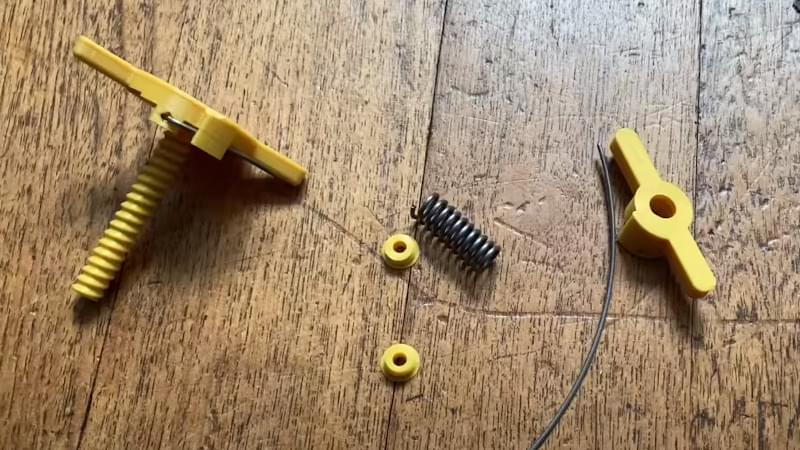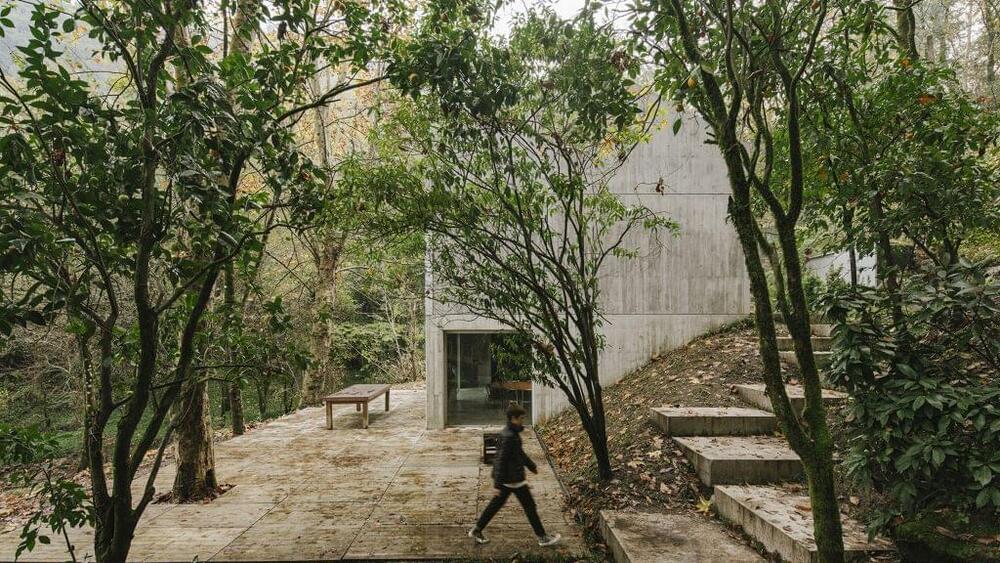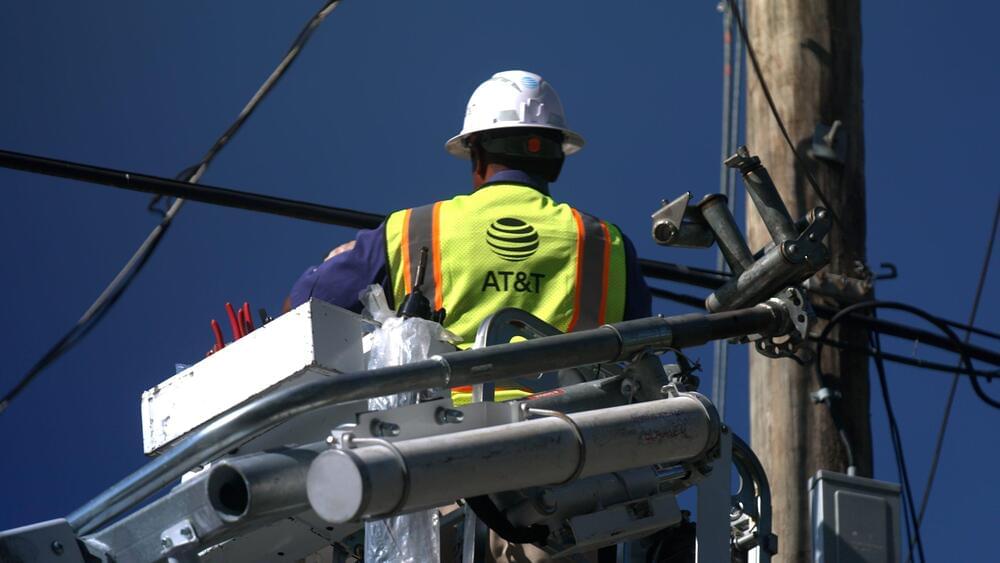Archive for the ‘habitats’ category: Page 50
Feb 8, 2022
Feds arrest married couple, seize $3.6 billion in hacked bitcoin funds
Posted by Genevieve Klien in categories: bitcoin, cryptocurrencies, cybercrime/malcode, habitats
Tom HlavacSustainable would be a home built of hempcrete, with a greenhouse capable of growing enough food for the family, a small henhouse, and a few bee hives. And a septic system capable of producing fertilizer.
No need for megacorporate involvement. Somethi… See more.
Tom HlavacIf Musk could catalyze adoption of hempcrete and mass produce 3D printers for that, he would do more if value than everything he has done before.
Continue reading “Feds arrest married couple, seize $3.6 billion in hacked bitcoin funds” »
Feb 5, 2022
The first 3D-printed house made with dirt
Posted by Shubham Ghosh Roy in category: habitats
The world’s first 3D-printed house made from dirt is environmentally friendly and looks great.
Feb 3, 2022
Saving Space Station with Special Guest Gary Barnhard
Posted by Greg Allison in categories: food, habitats, space

NASA wants to plunge the International Space Station (ISS) into the ocean in 2030. How can we save it?
You can support Galactic Gregs by supporting the sister channel Green Gregs by clicking the links below:
See the Special Deals at My Patriot Supply: www.PrepWithGreg.com.
Awesome deals for long term food supplies!
For gardening in your Lunar habitat Galactic Gregs has teamed up with True Leaf Market to bring you a great selection of seed for your planting. Check it out: http://www.pntrac.com/t/TUJGRklGSkJGTU1IS0hCRkpIRk1K
Feb 3, 2022
The New Ford F-150 Lighting Can Power Your Whole House for 3 Days in a Blackout
Posted by Shubham Ghosh Roy in categories: climatology, habitats
Feb 1, 2022
Open-source DIY heater helps unsheltered stay warm in winter
Posted by Shubham Ghosh Roy in category: habitats

A DIY heater developed by Portland-based collective HeaterBloc is helping unsheltered people across the U.S. stay warm this winter — and the potentially life-saving units cost just $7.
The challenge: On any given night in America, an estimated 226,000 people are “unsheltered” or “unhoused,” meaning they’re sleeping in cars, tents, abandoned buildings, or other places outside of homes or shelters.
Continue reading “Open-source DIY heater helps unsheltered stay warm in winter” »
Jan 31, 2022
3D Printed Jig Makes Custom Springs A Snap
Posted by Shubham Ghosh Roy in category: habitats

We’ve often heard it said that springs come in in all shapes and sizes…except for the one you need. In light of this, the hardware hacker would do well to keep the tools and knowledge required to make a custom spring close at hand when building something that moves. Luckily, all it really take is some stiff metal wire, a rod, and patience.
Unless you’ve got a 3D printer, that is. In which case, we’d suggest you print out this very clever “Spring Factory” designed by [Vincent Baillet]. The simple tool, consisting of just two parts, makes it easier and faster to make consistent DIY springs when compared to traditional methods. Rather than trying to eyeball the spacing of the coil as you wind the wire around the mandrel, this design does it for you.
Continue reading “3D Printed Jig Makes Custom Springs A Snap” »
Jan 31, 2022
Carvalho Araújo completes monolithic concrete house in a Portuguese forest
Posted by Shubham Ghosh Roy in categories: habitats, materials
Concrete and glass are used throughout the interior and exterior of this holiday home in northern Portugal, which local studio Carvalho Araújo designed to blend in with its woodland setting.
Located in Vieira do Minho in the district of Braga, Casa na Caniçada is a second home built on a densely wooded 0.75-acre site next to the Caniçada reservoir.
An existing building of poor design and construction quality was removed to make way for the three-storey house designed by local office Carvalho Araújo.
Jan 30, 2022
How IoT Will Transform Household Chores In The Future
Posted by Gemechu Taye in categories: biotech/medical, business, food, habitats
The COVID-19 pandemic brought about a seismic shift in the way organizations and offices operate. Working from home has become a preferred option for countless businesses and millions of employees around the globe. The work from home trend might continue in the future too, as it has proven not to affect business productivity adversely. Additionally, as per a McKinsey study, up to 278 business executives plan to reduce their office space by 30% even beyond the pandemic. Work from home is a seemingly viable option for employees for a variety of reasons, one of them being the possible arrival of the metaverse, a concept that will make traveling to a specific location for work redundant. This will affect one particular part of employees’ personal lives—domestic chores. There are more than a few reasons why IoT for smart cities and homes will play a significant role in optimizing household chores.
Domestic chores are an unavoidable yet necessary part of individuals’ personal lives. For instance, tasks such as cooking meals, managing laundry work and making timely lighting and plumbing repairs are hard to overlook, even if an important virtual business meeting is going on. In simple words, tasks such as cooking, cleaning, maintenance and task management act as distractions that stand in the way of remote organizational work. Resultantly, the productivity of remote employees is seriously affected by domestic chores. To state the obvious, remote working blurs the boundaries between the workspace and personal life. Work hours increasingly blend into the time that would normally be associated with completing household tasks. These are remote working problems that you probably know. The biggest problem of remote working is how it has regressed gender equality and the involvement of women in prominent positions at the workplace.
Jan 27, 2022
Multi-gigabit fiber internet launched in Reno (updated)
Posted by Genevieve Klien in categories: biotech/medical, habitats, internet
Telecom provider AT&T this week said some local customers now have access to faster internet with the addition of 2 gigabit and 5 gigabit fiber internet to the community. Reno is one of more than 70 metro regions in the country to get the upgrade.
The top speeds for AT&T fiber internet had previously been 1 gig.
AT&T officials said the rollout of the improved fiber network for residential customers was in response to pandemic shifts in how people work, with many more people setting up home offices or making their homes a permanent workplace.















